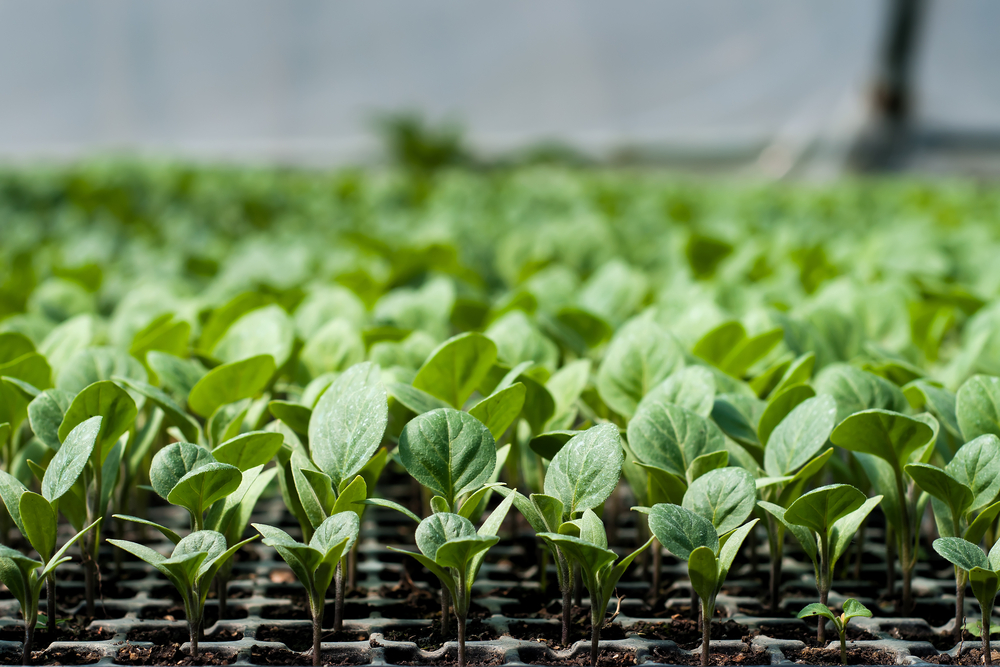Here’s our guide to a careful approach for new gardeners.

If you’re a new gardener who has only recently planted seeds, you’ll soon enough catch sight of tiny sprouts poking their way above the soil. This is a good sign that means your hard work as a plant mom or dad is paying off!
At the same time, it’s important to make sure your seedlings aren’t overcrowded. Crowded seedlings are a common problem that can prevent plants from reaching their full potential. If you don’t plant your seeds far enough apart, they’ll have to compete for the same sun, water, air and nutrients in the soil.
So what can you do about this? You can use a technique called thinning, which involves removing certain plants or parts of plants to fuel the growth of their neighbors. We recommend thinning by trimming the stems of the weakest seedlings to allow the stronger ones to develop.
Here’s a step-by-step guide that will help you through the process.
Step 1:
Check out your seedlings. The ideal length to start thinning is when they reach two to four inches in height and have grown one to two sets of true leaves. True leaves look like miniature versions of leaves on the mature plants as opposed to seed leaves, which are more round with less detail.
Step 2:
Spot your strongest plant baby. Look for the seedlings that appear bright in color and free of any spots that would indicate disease. Those are the ones you can keep. You can also determine which seedlings are the healthiest through the seedling’s true leaf growth. More true leaves means they are farther along in their development.
Step 3:
Evaluate the spacing between your seedlings to determine how many you will need to get rid of. Your seed packet will normally tell you the appropriate spacing required between your seedlings for thinning. Every plant is different. With beets, a good distance is about three to four inches apart. A good rule of thumb is if you haven’t planted your seedlings in the garden yet, is to limit one seedling per cell or seeding plot.
Step 4:
You’re going to need scissors or tiny pruners. Once you’ve identified your weaker seedlings, it’s time to cut them. Using your cutting tool, trim the seedling at the base, right at the soil surface. Be gentle and don’t yank at your seedlings when you’re gripping them.
We recommend taking this approach instead of pulling your seedlings out of the soil, as that can cause damage to the roots of the neighboring seedlings and stunt their growth.
Roots are delicate at this stage in your plant’s development. For root vegetables like carrots, beets and parsnips, this is especially true. Roots might also be entangled with each other if the seedlings grew close together. It’s best to leave them where they are and cut the seedling at the stem.
Step 5:
Spoiler alert. You can still make use of seedling stems you’ve removed from your garden. A number of seedlings from certain plants are edible microgreens that are jam packed with nutrients. Baby greens that you can eat include lettuce, kale, spinach, arugula, herbs, broccoli, beets, carrots, turnips, pea shoots, celery, cabbage, onion, bok choy, radish and swiss chard. You should not eat seedlings from the nightshade family like tomatoes, peppers and eggplant. Throw these guys in the compost instead.
Step 6:
Before you finish up, give your plant babies a food boost. It’s time to water and fertilize. Seedlings typically like fertilizer that is higher in phosphorus. A store bought fertilizer will say on the label how high it is in phosphorus. A seaweed or fish emulsion fertilizer will also be effective.
I like this guide. Especially, I love where you suggested using scissors to thin instead of pulling, I am going to thin my sorghum soon, I will follow this advice.
I am new at the vegetable growing game. I have several vegetables to thin and was wondering how without disturbing those you wish to keep. I’ll have to wait a bit longer for the true leaves to come so I can start thinning. Hence, i found this step-by-step guide with examples very helpful for me. Cheers